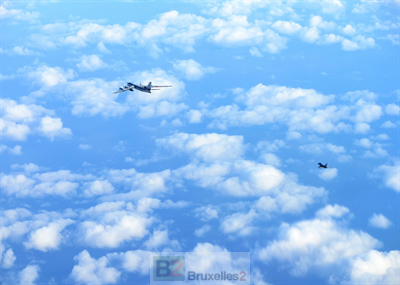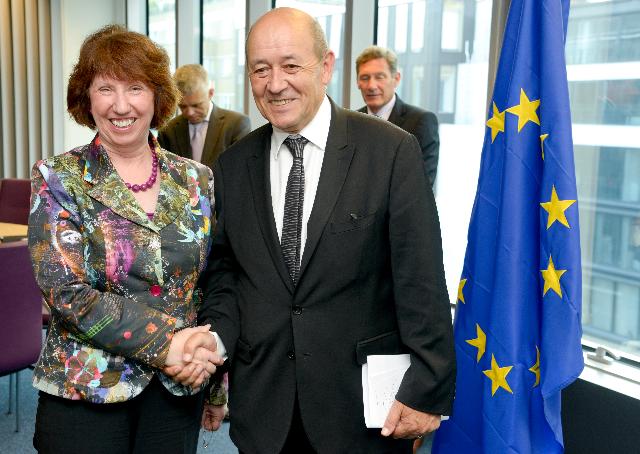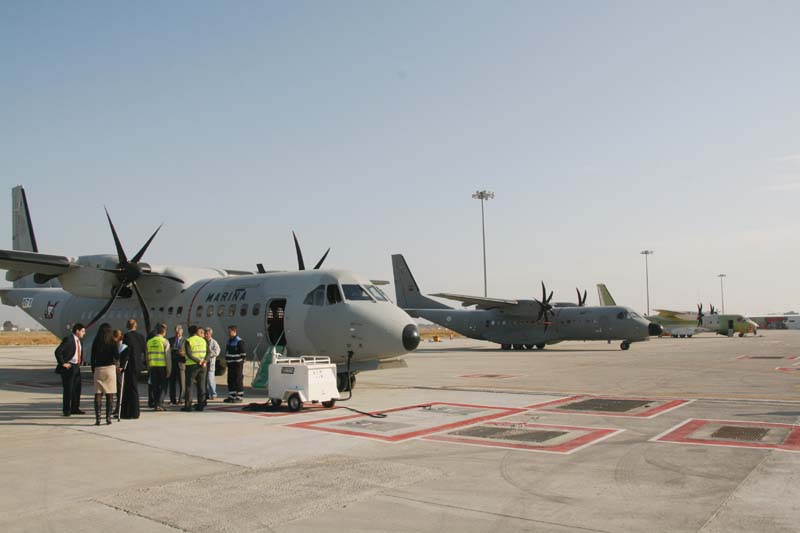Russian planes make unique skies…
 (BRUSSELS2) The irruption of Russian bombers and military planes, in the European sky, without filing a prior flight plan, seems "trendy", according to NATO military specialists. The headquarters of the forces in Europe (Shape) thus issued a press release on Wednesday evening (October 29) – a rather unusual event outside the period of operation – to alert European public opinion to this fact.
(BRUSSELS2) The irruption of Russian bombers and military planes, in the European sky, without filing a prior flight plan, seems "trendy", according to NATO military specialists. The headquarters of the forces in Europe (Shape) thus issued a press release on Wednesday evening (October 29) – a rather unusual event outside the period of operation – to alert European public opinion to this fact.
4 aircraft groups over Europe
NATO « a detected and follow-up four groups of planes russian military perform maneuvers significant military in the airspace European above the Baltic Sea, the North Sea, the ocean Atlantic, and from the black sea 28 and 29 October ” indicates the press release (see the detail below – in English).
Activity tripled in 2014
What « represents an unusual level de aerial activity in the airspace European swears the Atlantic Alliance. In general, she adds, the year 2014 was marked by more intense activity than usual. NATO has led « more 100 interceptions of planes Russian in 2014. nowadays », or, thrice more than what had been done in 2013. .
interference et interceptions « are normal procedure when an unknown plane gets closer to airspace of NATO “we specify to the Shape. But these flights represent a " risk potential for civil aviation ; the russian army ne does not often file plans of vol et n'don't use their transponders on board. This does not then allow air traffic control civilian of detect these planes ni of the'make sure there is have no interference with civil air traffic ».
Comment: the objective sought by the Russians is threefold in my opinion. On the one hand, to mark the Russian presence, to test the reaction system of the various Western countries. On the other hand, to diversify the attention, to make the exit of a plane for surveillance become routine, normality, "playing on the nerves", and why cause an "incident" for a moment. For NATO, it should not be denied either, this kind of communications makes it possible to demonstrate its ability to respond by air and its desire to "reassure" its Eastern allies.
Finally, there is an economic and capacity aspect, often neglected in the comments. We are thus witnessing a desire to exhaust the opposing hunt, a sort of reverse arms race. Russia, knowing that European capacities are ultimately quite limited, thus leads to a greater output of aircraft, a greater turnover of mechanical overhauls, higher costs, and ultimately an increase in expenditure for European countries already in the tightest budget. Just the surveillance of the air in the Baltic countries mobilizes 3 times more planes than in ordinary times, which make many more outings. The addition will be salty...
(NGV)
Eight Russian Aircraft Intercepted over North Sea / Atlantic Ocean on 29 October 2014
At approximately 3:00 am CET on 29 October, NATO radars detected and tracked eight Russian aircraft flying in formation over the North Sea. F-16 aircraft from the Royal Norwegian Air Force were scrambled, intercepted and identified the Russian aircraft, which included four Tu-95 Bear H strategic bombers and four Il-78 tanker aircraft. The formation flew from mainland Russia over the Norwegian Sea in international airspace. Six of the Russian aircraft then turned back to the north-east towards Russia, while two Tu-95 Bear H bombers continued south-west, parallel to the Norwegian coast, heading to the south-west. The Russian aircraft continued over the North Sea, and Typhoon fighters from the United Kingdom were scrambled in response. While over the Atlantic Ocean west of Portugal, the two Russian aircraft were intercepted and identified by F-16s from the Portuguese Air Force. The Russian aircraft turned back heading north-east, flying to the west of the United Kingdom. NATO aircraft from the United Kingdom and Norway were standing by and NATO assets on the ground and in the air tracked the Russian aircraft throughout. At present, the two Tu-95 bombers appear headed back to Russia, but as of 4 pm CET the aircraft were still airborne.
The bomber and tanker aircraft from Russia did not file flight plans or maintain radio contact with civilian air traffic control authorities and they were not using on-board transponders. This poses a potential risk to civil aviation as civilian air traffic control cannot detect these aircraft or ensure there is no interference with civilian air traffic.
Four Russian Aircraft Intercepted over Black Sea on October 29, 2014
During the afternoon of 29 October, NATO radars detected and tracked four Russian aircraft flying over the Black Sea in international air space, including 2 Tu-95 Bear-H bombers and 2 Su-27 Flanker fighter jets. Fighters from the Turkish Air Force have intercepted the Russian aircraft and NATO is continuing to track them in international airspace. As of 4 pm CET the aircraft were still airborne.
Multiple Russian Aircraft Intercepted over Baltic Sea on October 29, 2014
During the afternoon of 29 October, NATO radars detected and tracked a number Russian aircraft flying over the Baltic Sea in international airspace, including 2x MiG-31 Foxhound, 2x Su-34 Fullback, 1x Su-27 Flanker and 2x Su-24 Fencer jets . Portuguese F-16 Fighters assigned to the Baltic Air Policing Mission were scrambled in response and the Russian aircraft returned to Russian airspace.
Seven Russian Fighter Jets Also Intercepted on October 28, 2014
During the afternoon of 28 October, NATO radars detected and tracked seven Russian combat aircraft flying in international airspace over the Baltic Sea. The aircraft were detected at approximately 2:30 pm CET on 28 October and included 2x MiG-31 Foxhound, 2x Su-34 Fullback, 1x Su-27 Flanker and 2x Su-24 Fencer jets.
The Russian aircraft were flying in the Gulf of Finland and were intercepted by German Typhoon fighter jets from NATO's Baltic Air Policing Mission in order to identify the aircraft and protect Allied air space. The Russian aircraft continued into the Baltic Sea and were subsequently intercepted by Allied fighters from Denmark as well as fighters from Finland and Sweden, which are not members of NATO. The Russian fighters continued to the Kaliningrad Oblast. The Russian aircraft had filed a flight plan with air traffic control authorities, were using transponders, but did not maintain radio contact with civilian air traffic control.



In each case, it is not European airspace but international airspace for which there is no obligation to set up a flight plan and which is open to everyone; The interceptions are conducted by NATO which wants to prove its ability to react but it does not cost more and is deducted in the usual training (apart from the costs related to the possible deployment of personnel as in the Baltic countries but nothing for Turkey and Norway) and brings more realism…
These interceptions were routine during the Cold War; Rather, we are witnessing an attempt to increase the power of Russian air capabilities, which more than 20 years later are trying to regain the operational level of the USSR. It should also be noted that the planes used date from the 60s! they presently pose no credible threat to NATO air assets